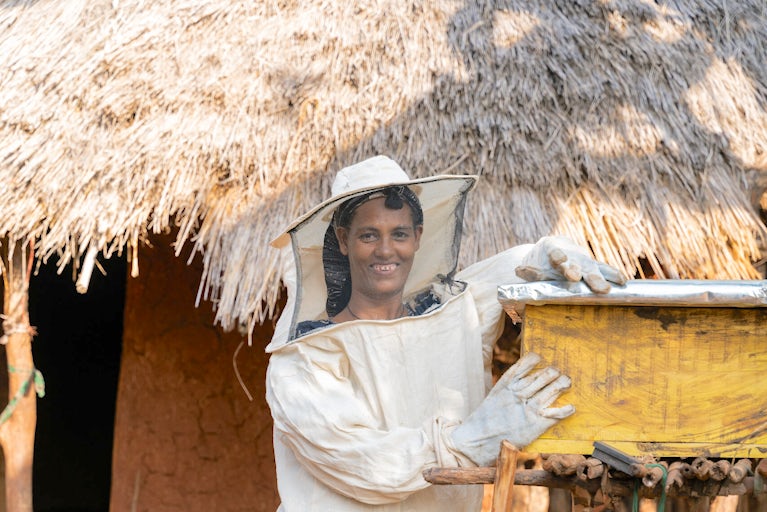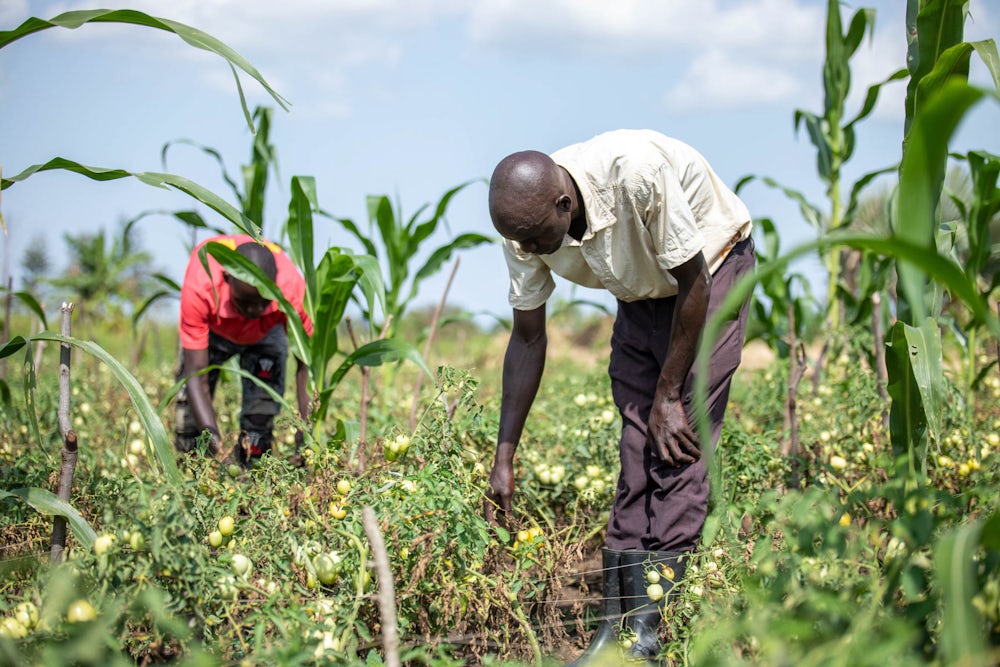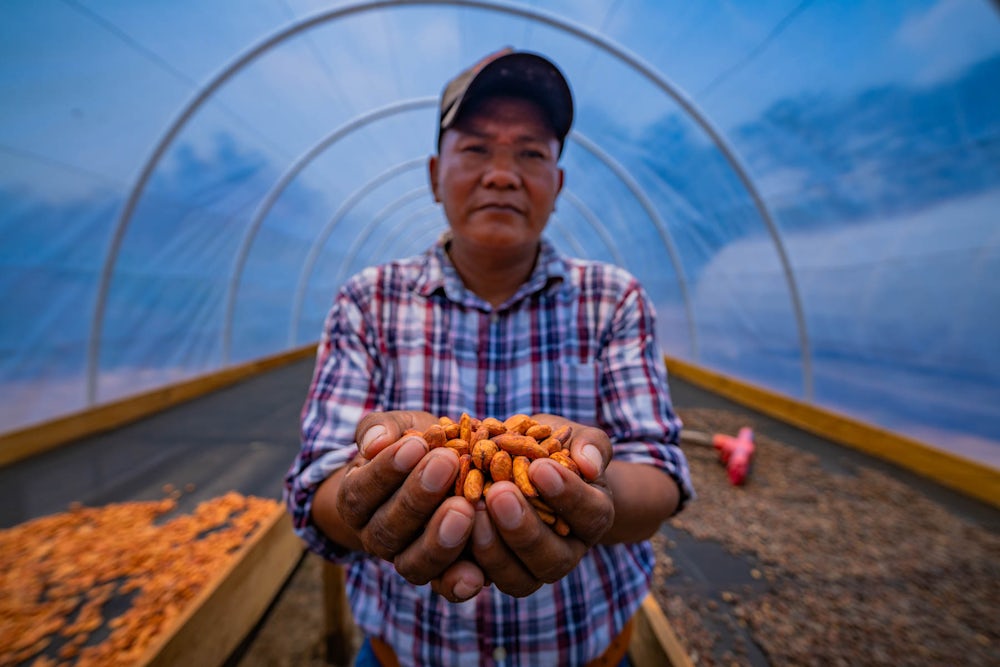
2024 Annual Report: Food Systems That Work for Smallholder Farmers
By Heifer International | December 16, 2024
From breakfast tables to business meetings, study sessions and casual catch-ups with friends, millions of cups of coffee are consumed globally every day. Yet few coffee drinkers choosing between Colombian and Brazilian beans realize that coffee was first discovered in Ethiopia, which continues to be one of the top five coffee producers in the world. Similarly, many shoppers will not know that sugar can be traced back to New Guinea, or that oranges originated in China and Southeast Asia.
In today’s global food system, the dizzying choice and year-round availability in supermarkets, restaurants and food apps mean most consumers have little idea where many of their favorite foods really come from — or the people producing them.
Improving food literacy — the knowledge of food, its origins, and use — among the global community is crucial for transforming food systems to become healthier, fairer and more sustainable. The upcoming UN Food Systems Summit Stocktake, which will review global progress towards a more sustainable and equitable food system, is the perfect opportunity to focus on incorporating food literacy in bothnational and global food plans.
Reconnecting consumers with the provenance of their groceries allows for more informed choices, which can help drive demand for nutritious, sustainably produced food, shift supply chains toward environmentally sound practices and reward the small-scale farmers who adopt regenerative approaches.

For example, many consumers do not realize that more than a third of the world’s food is grown by smallholder and family farmers and, by taking food commodities for granted, we do these producers an enormous disservice. A report from Land O’Lakes showed that many Americans believe just over 40 percent of their food comes from family farms whereas the number actually stands at nearly 90 percent.
If more consumers realized their food choices were directly impacting small-scale farmers working with small margins and significant risks, it’s possible their choices would change to reflect preferences for sustainably grown produce that paid farmers a fair price. For instance, consumers may not think about the agricultural practices of individual cocoa farmers at the start of supply chains when sizing up the prices of chocolate bars. Yet one recent study indicated that 50 percent of consumers were prepared to pay a premium for sustainable brands. Only when consumers are in tune with the origins of their food can we begin to change the global food system for the better.
For consumers, understanding more about food origins can start with joining Community-Supported Agriculture (CSA) programs, which unite communities to support local farmers,to learn about and buy food grown with regenerative practices or sourced from cooperatives that support smallholder farmers and their communities. This is important because despite growing a significant portion of the world’s food, many smallholder farmers across the world struggle to make enough income to cover their basic family needs.
Consumers can also use a growing number of apps, such as FoodLogiQ Traceability, to learn more about the origins of different foods, and call for greater transparency in the sourcing of food in their local supermarkets, workplaces and schools.
Alongside consumer efforts, policy decisions must also support greater food literacy, for example, through greater transparency on food labels to show provenance and production systems and support informed consumer choices. Governments can also introduce incentives that reward farmers who grow crops sustainably to help make the transition more affordable for both producer and consumer. In the cacao value chain in Peru, for example, offering technical assistance and organic certification to farmers has encouraged the uptake of nature-friendly practices.

Similarly, through the Promesa Café-Cacao program, Heifer is also working to help smallholder cocoa and coffee farmers in Honduras to scale production through sustainable agricultural practices. With improved productivity, farmers can offer reliable supplies of sustainable ingredients while alsobenefiting from the premium associated with food produced using best practices. At the same time, buyers can use traceability systems such as the TRACE app to support greater transparency throughout the supply chain.
Incentives also include ensuring that smallholder farmers receive a fair price for their contributions to global food systems. Heifer supports initiatives like the Living Income Price methodology, which accounts for true production costs of global cash crops like coffee and cocoa. The methodology calculates the price of commodities, taking into account costs across the value chain to establish a minimum viable price so that farmers are compensated fairly for their sustainable efforts.
When we support farmers who use the most sustainable methods, we fuel better food futures. Smallholder farmers are more than just the labour behind the food that feeds our world, they are the driving force for sustainable, healthy and nutritious futures. It is in both consumers’ and farmers’interests that food is produced sustainably because this ensures stable prices and reliable supplies, all while protecting the environment.
So, the challenge laid down to everyone at markets, in restaurants and kitchens is to consider how your choices can support better nutrition, livelihoods and a healthier planet. Have a conversation about what’s on your plate because food is a universal language and we all need to speak it.
Originally published by the World Economic Forum.
Cart is empty
Success!
Please be patient while we send you to a confirmation page.
We are unable to process your request. Please try again, or view common solutions on our help page. You can also contact our Donor Services team at 855.9HUNGER (855.948.6437).
Covering the transaction fee helps offset processing and administrative fees that we incur through taking payments online.
Success!
Please be patient while we send you to a confirmation page.
We are unable to process your request. Please try again, or view common solutions on our help page. You can also contact our Donor Services team at 855.9HUNGER (855.948.6437).
When you donate a gift to someone, you'll have the option to create a free card after your donation is complete.

A FREE gift will be sent to supporters who choose to give a monthly gift.
Covering the transaction fee helps offset processing and administrative fees that we incur through taking payments online.

A FREE gift will be sent to supporters who choose to give a monthly gift.